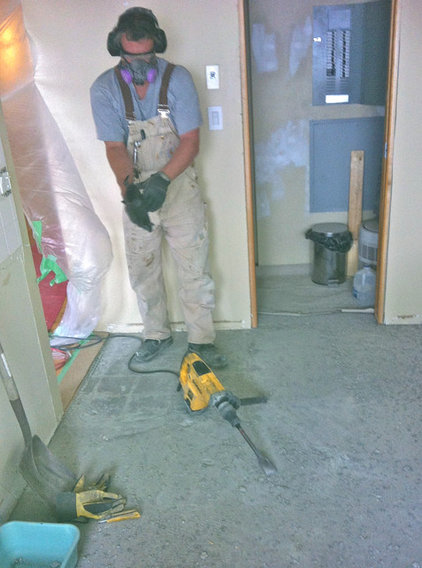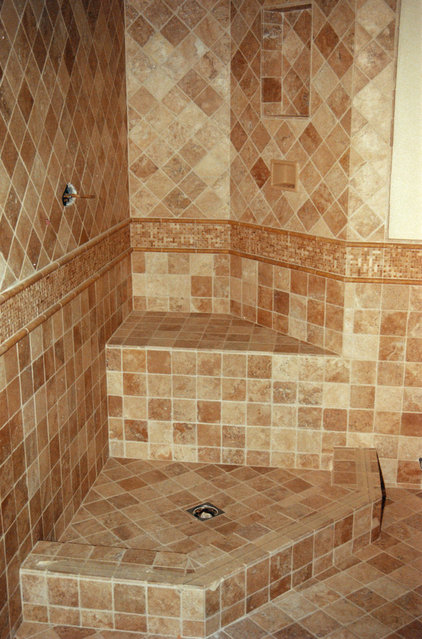Bad day at the office? Did some jerk cut you off in traffic? Perfect timing for your tile demolition project. Pick up a framing hammer and get rid of your frustration. But before you start swinging, let's look at what can go wrong and what you should do to prepare.
How are you going to protect your home from demo debris and dust? Will your home's heating system pick up the dust from this renovation and spread it through the house? Will you nick a water line and have to scramble for the main water shutoff?
This story can help you prevent potential disaster. Stack the odds in your favor, and learn how to cover the basics here.
Note: Prepping your home properly is important whether you plan to demo on your own or hire a pro. If you DIY, make sure you're comfortable handling heavy demolition equipment — power tools use a lot of force — and have experience with demo work. Demolition is hard and physical, so make sure you're fit for the job and comfortable handling any tool before using it. Use the proper safety equipment, and don't hesitate to call a pro if you're having trouble with this messy, noisy work.
How are you going to protect your home from demo debris and dust? Will your home's heating system pick up the dust from this renovation and spread it through the house? Will you nick a water line and have to scramble for the main water shutoff?
This story can help you prevent potential disaster. Stack the odds in your favor, and learn how to cover the basics here.
Note: Prepping your home properly is important whether you plan to demo on your own or hire a pro. If you DIY, make sure you're comfortable handling heavy demolition equipment — power tools use a lot of force — and have experience with demo work. Demolition is hard and physical, so make sure you're fit for the job and comfortable handling any tool before using it. Use the proper safety equipment, and don't hesitate to call a pro if you're having trouble with this messy, noisy work.
1. Protect your floors. It's easy to forget about floor protection until the dirt, dust and tile pile up. We use Ram Board to protect finished floors. Combined with a plastic tarp, it can keep debris from harming the finished flooring and dust from flying everywhere.
|


No comments:
Post a Comment